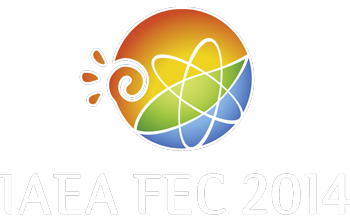Speaker
Prof.
Leon Begrambekov
(National Research Nuclear University (MEPhI))
Description
Tungsten is considered as the plasma facing material of the ITER divertor. High power density plasma irradiation of tungsten initiates the number of processes (see for instance [1, 2]) resulting in its accelerated destruction. Application of the in situ renewable protecting boron carbide (B4C) coating was shown can keep tungsten tiles from plasma irradiation, and by this means prevent development of the above mentioned processes [3].
The report presents the first results of investigation of the important aspects of the B4C coating application in ITER have not been investigated yet. Among them there are the regime and conditions of high adhesive plasma deposition of B4C on tungsten; testing of B4C coating ability to withstand the thermal cycling and high power density irradiation by plasma ions and electrons; the method of removal of the products of B4C erosion from the vessel.
[1] V.A.Makhlaj, I.E.Garkusha, N.N.Arsenov, et al. J.of Nucl.Mater. 438 (2013) S233-236
[2] G.Putnik, Th.Loewehoff. J.of Nucl.Mater. 438 (2013) S945-S948
[3] O.I.Buzhinskij, V.G.Otroschenko, D.G.Whyte et al., J. of Nucl. Mater. 313-316 (2003) 214.
| Country or International Organisation | Russian Federation |
|---|---|
| Paper Number | MPT/P4-17 |
Author
Prof.
Leon Begrambekov
(National Research Nuclear University (MEPhI))
Co-authors
Dr
Englen Azizov
(1Troitsk Institute for Innovation and Fusion Research (TRINITI))
Dr
Igor Mazul
(Efremov Scientific Research Institute of Electrophysical Apparatus (NIIEFA Efremov))
Dr
Nikolay Klimov
(1Troitsk Institute for Innovation and Fusion Research)
Dr
Oleg Buzhinsky
(1Troitsk Institute for Innovation and Fusion Research (TRINITI))
Prof.
Valery Kurnaev
(National Research Nuclear University (MEPhI))

